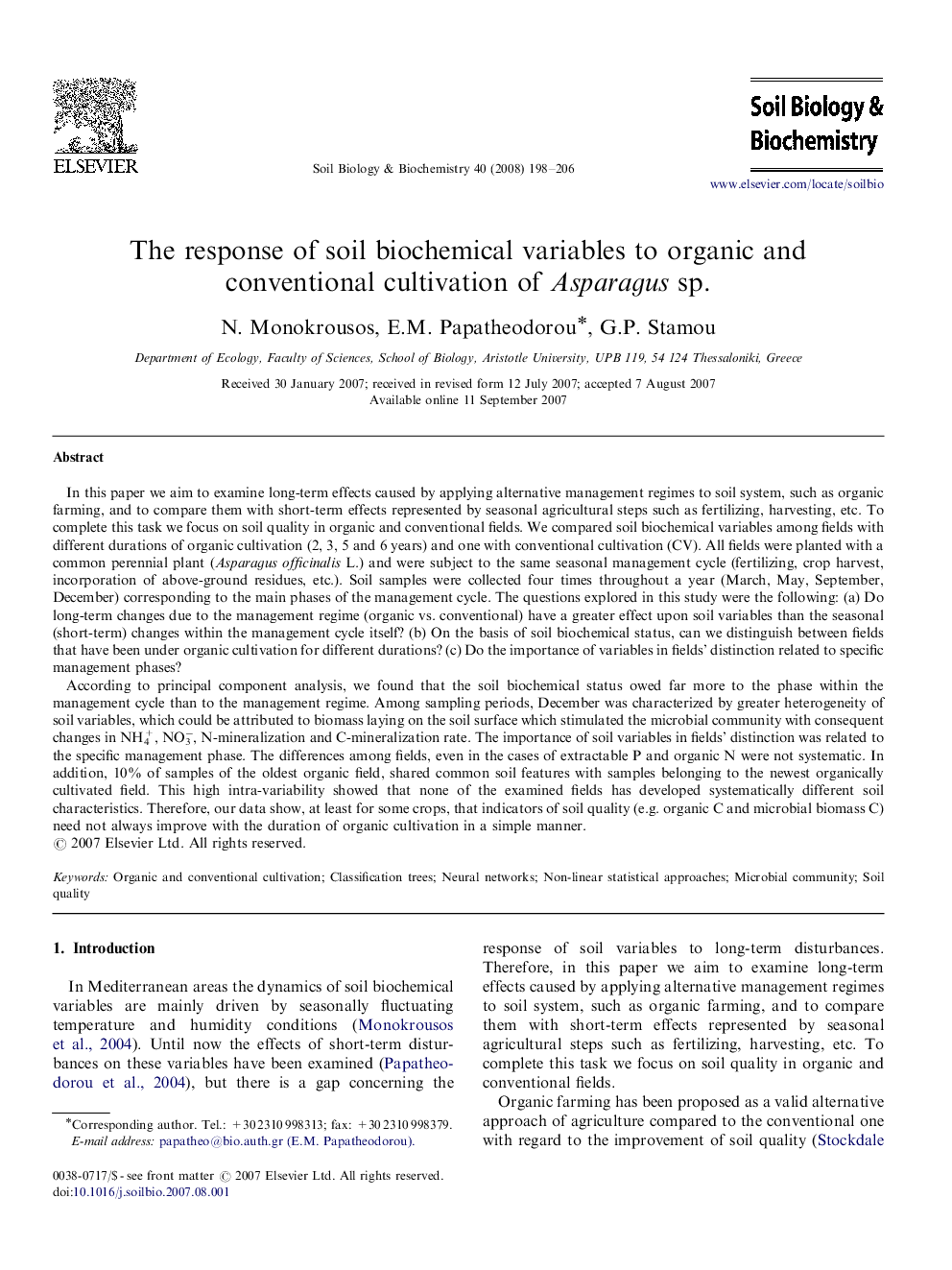| Article ID | Journal | Published Year | Pages | File Type |
|---|---|---|---|---|
| 2025491 | Soil Biology and Biochemistry | 2008 | 9 Pages |
In this paper we aim to examine long-term effects caused by applying alternative management regimes to soil system, such as organic farming, and to compare them with short-term effects represented by seasonal agricultural steps such as fertilizing, harvesting, etc. To complete this task we focus on soil quality in organic and conventional fields. We compared soil biochemical variables among fields with different durations of organic cultivation (2, 3, 5 and 6 years) and one with conventional cultivation (CV). All fields were planted with a common perennial plant (Asparagus officinalis L.) and were subject to the same seasonal management cycle (fertilizing, crop harvest, incorporation of above-ground residues, etc.). Soil samples were collected four times throughout a year (March, May, September, December) corresponding to the main phases of the management cycle. The questions explored in this study were the following: (a) Do long-term changes due to the management regime (organic vs. conventional) have a greater effect upon soil variables than the seasonal (short-term) changes within the management cycle itself? (b) On the basis of soil biochemical status, can we distinguish between fields that have been under organic cultivation for different durations? (c) Do the importance of variables in fields’ distinction related to specific management phases?According to principal component analysis, we found that the soil biochemical status owed far more to the phase within the management cycle than to the management regime. Among sampling periods, December was characterized by greater heterogeneity of soil variables, which could be attributed to biomass laying on the soil surface which stimulated the microbial community with consequent changes in NH4+, NO3−, N-mineralization and C-mineralization rate. The importance of soil variables in fields’ distinction was related to the specific management phase. The differences among fields, even in the cases of extractable P and organic N were not systematic. In addition, 10% of samples of the oldest organic field, shared common soil features with samples belonging to the newest organically cultivated field. This high intra-variability showed that none of the examined fields has developed systematically different soil characteristics. Therefore, our data show, at least for some crops, that indicators of soil quality (e.g. organic C and microbial biomass C) need not always improve with the duration of organic cultivation in a simple manner.
